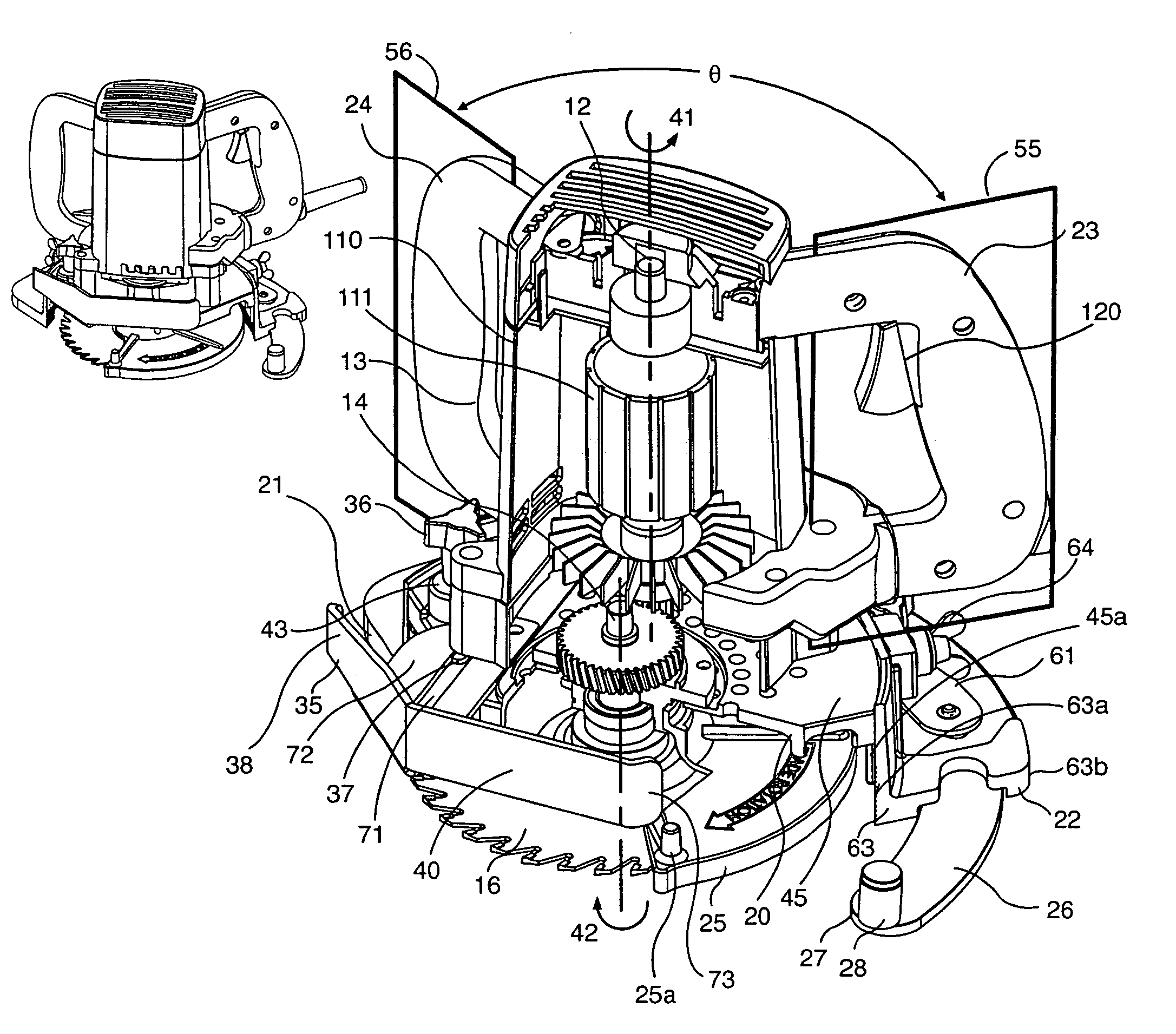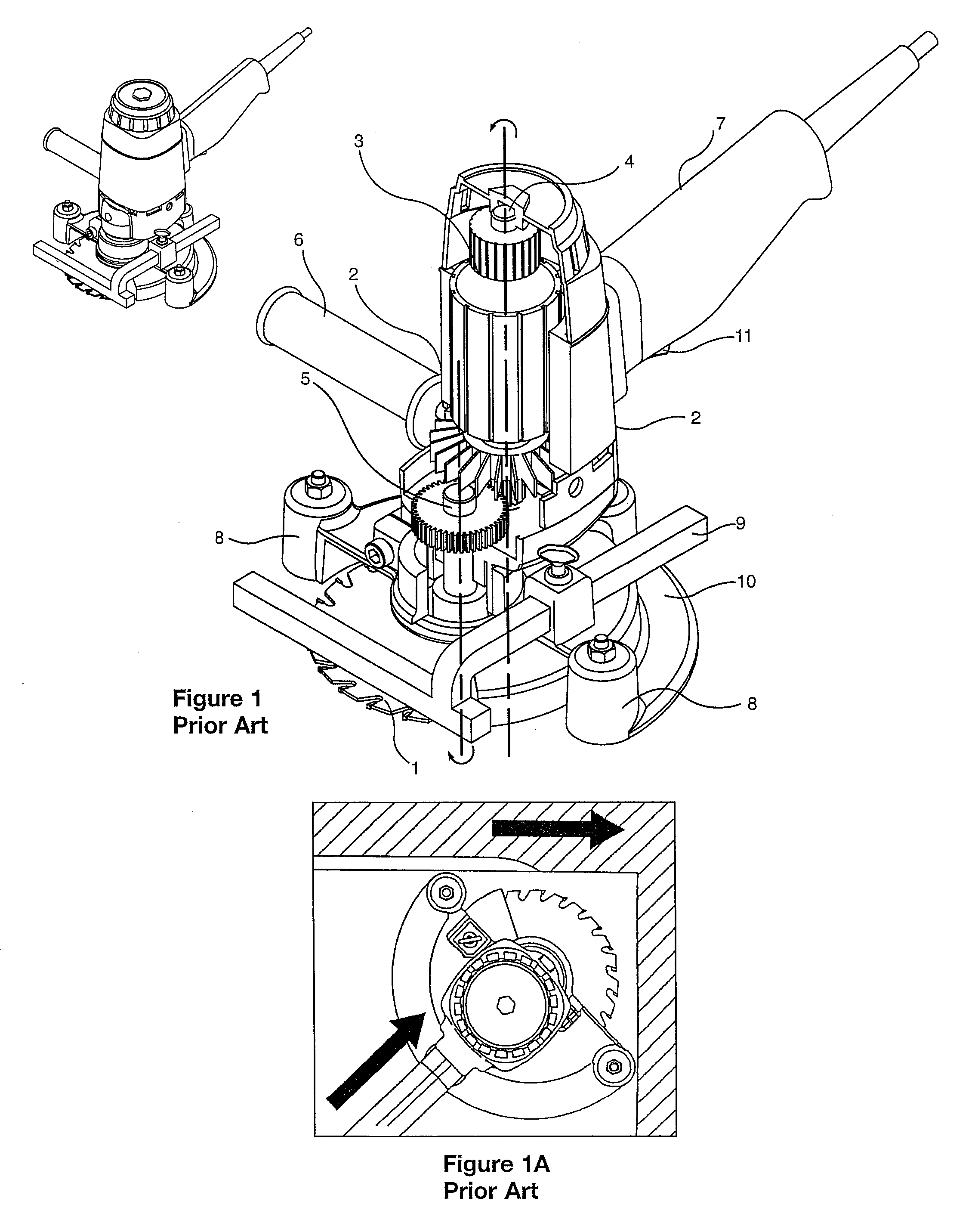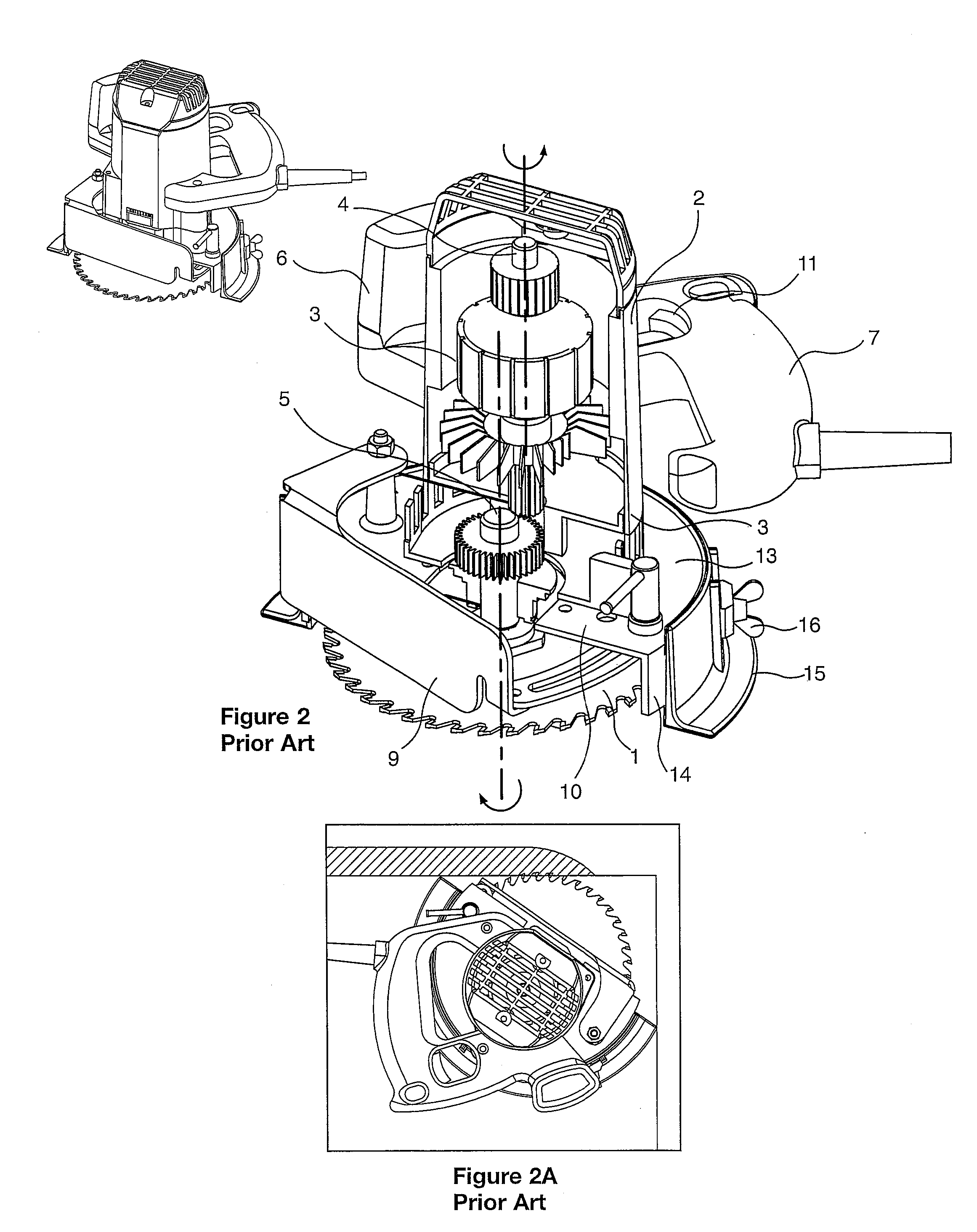Undercut saw
a saw and undercutting technology, applied in the field of power tools, can solve the problems of reducing the efficiency of the saw, and not allowing the saw to undercut the inside corner area, etc., and achieve the effect of reducing the tipping
- Summary
- Abstract
- Description
- Claims
- Application Information
AI Technical Summary
Benefits of technology
Problems solved by technology
Method used
Image
Examples
Embodiment Construction
[0047]The present invention has a number of new and useful features not currently available in undercutting saws. Stability is important for undercut saws. If the saw in use tips forward or backward, it can result in damage to the wall or floor and possibly injure the user. Two design features, when utilized, further add to this instability. One is the incorporation of a fixed blade guard housing exposing a portion of the circular saw blade that is greater than 180 degrees of the saw blade's circumference. The fixed blade guard acts as the stable base for the saw. Reducing this circumferential area of the fixed blade guard makes the tool more likely to tip. The use of parallel armature and spindle shafts further leads to the adoption of a taller tool that is more likely to tip. A first aspect of the present invention utilizes a stabilization bar that extends from the fixed blade guard. This stabilization bar may be used in any undercut saw regardless of the mechanism in which the dr...
PUM
| Property | Measurement | Unit |
|---|---|---|
| angle | aaaaa | aaaaa |
| angle | aaaaa | aaaaa |
| angle | aaaaa | aaaaa |
Abstract
Description
Claims
Application Information
 Login to View More
Login to View More - R&D
- Intellectual Property
- Life Sciences
- Materials
- Tech Scout
- Unparalleled Data Quality
- Higher Quality Content
- 60% Fewer Hallucinations
Browse by: Latest US Patents, China's latest patents, Technical Efficacy Thesaurus, Application Domain, Technology Topic, Popular Technical Reports.
© 2025 PatSnap. All rights reserved.Legal|Privacy policy|Modern Slavery Act Transparency Statement|Sitemap|About US| Contact US: help@patsnap.com



